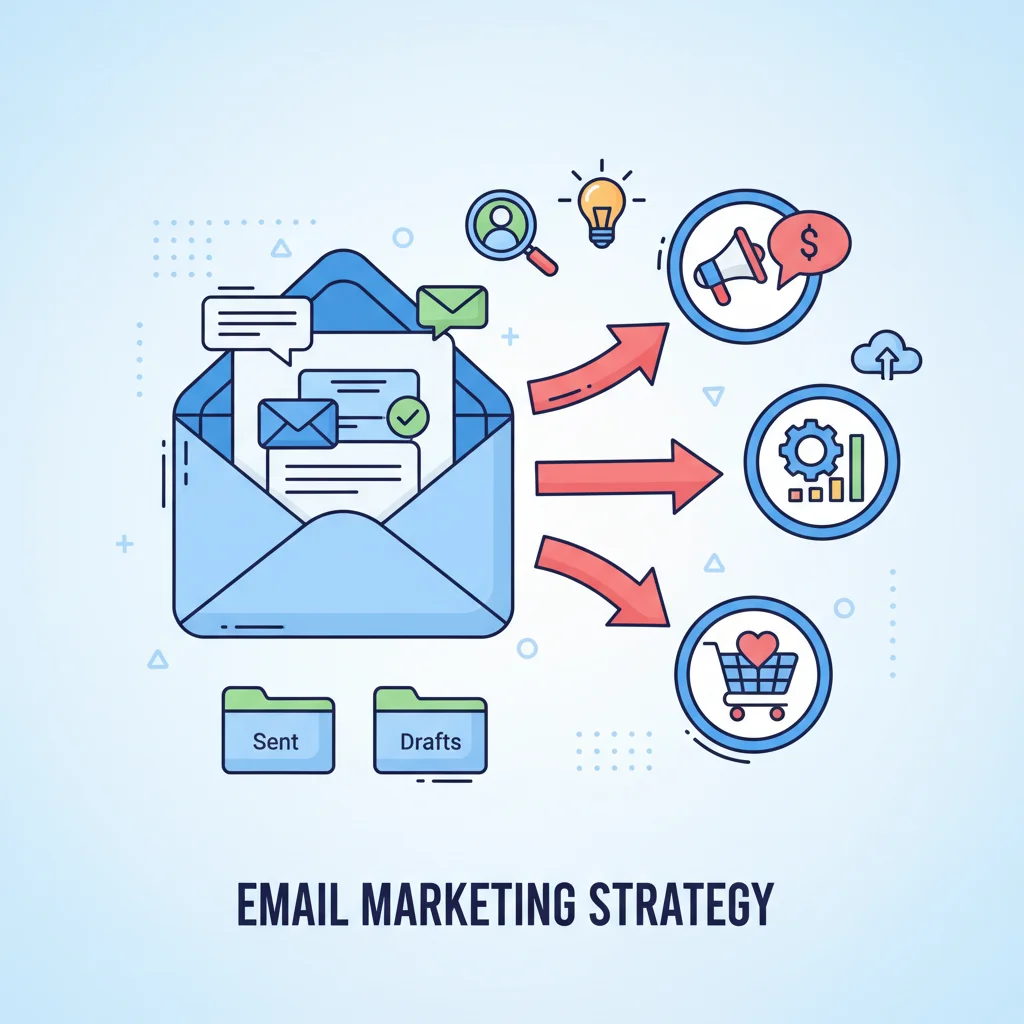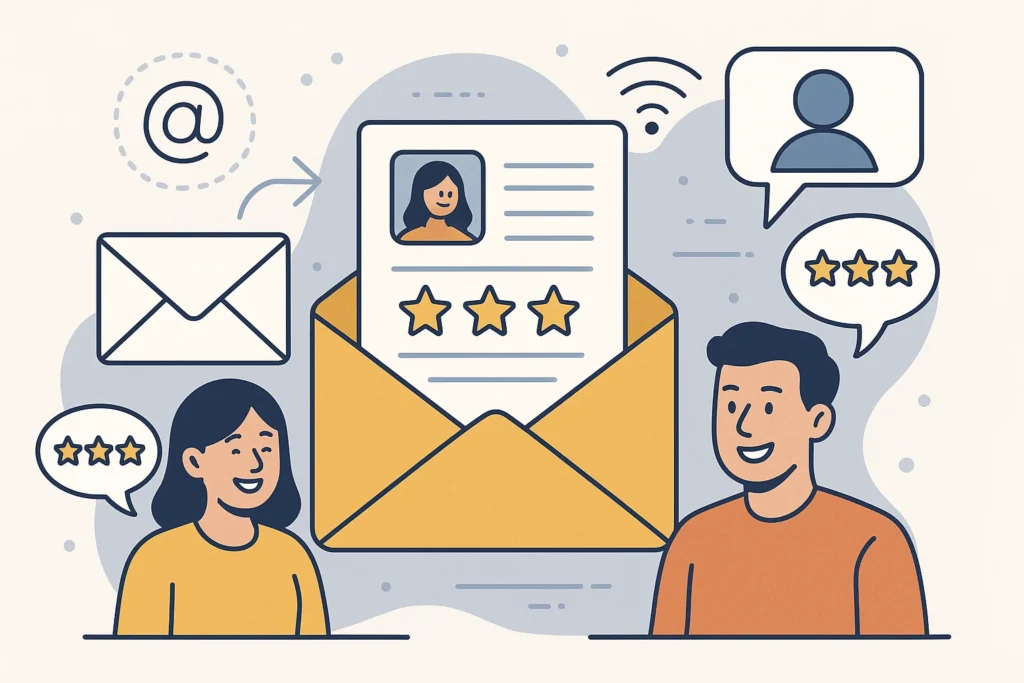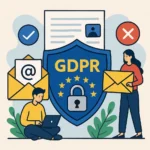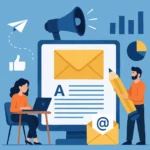Now Reading: 7 Key Elements of Conversion-Focused Marketing Emails That Convert
-
01
7 Key Elements of Conversion-Focused Marketing Emails That Convert
7 Key Elements of Conversion-Focused Marketing Emails That Convert

Email marketing remains one of the most powerful tools in a marketer’s arsenal, delivering an impressive ROI of $36 for every $1 spent. However, not all email campaigns are created equal. The difference between an email that converts and one that gets deleted often comes down to understanding and implementing the key elements of conversion-focused marketing emails.
Key Takeaways
- Compelling subject lines that grab attention and create curiosity are essential for high open rates
- Personalization and segmentation increase relevance and engagement by tailoring content to specific audience needs
- Clear, concise content that delivers value keeps readers engaged and prevents information overload
- Strong, visible CTAs guide recipients toward the desired action with clear positioning and compelling language
- Mobile optimization ensures your emails look great and function properly across all devices
- Professional design with brand consistency builds trust and improves user experience
- Strategic timing and frequency maximize engagement by reaching audiences when they’re most receptive
Compelling Subject Lines: Your First Impression
The subject line is your email’s first impression and often determines whether your message gets opened or ignored. With inboxes overflowing with promotional content, your subject line needs to stand out while clearly communicating value.
Characteristics of high-converting subject lines
Effective subject lines share several key characteristics that make them irresistible to recipients:
Brevity and clarity: Keep subject lines under 50 characters to ensure they display properly across devices. This constraint forces you to be concise and focus on the most compelling aspect of your offer.
Personalization: Including the recipient’s name or referencing their previous interactions with your brand can increase open rates by up to 26%. This simple technique signals relevance and builds an immediate connection.
Urgency and scarcity: Words that imply time sensitivity like “urgent,” “breaking,” “important,” or phrases like “limited time” create a fear of missing out that motivates immediate action.
Curiosity gap: Phrasing that hints at valuable information without revealing everything encourages opens. Questions work particularly well for this purpose.
Power words that drive opens
Certain words consistently outperform others in email subject lines. According to extensive research analyzing billions of emails, these high-performing keywords include:
- “Thank you”
- “Free delivery”
- “Available”
- “New”
- “Alert”
- “Introducing”
- “Celebrate”
- “Monthly”
- “Golden”
- “Breaking”
Examples of effective subject lines
- “John, have you heard about this?”
- “Unlock higher conversions for [Company Name]”
- “7 secrets to conquer [specific pain point]”
- “Last chance: Your 20% discount expires tonight”
- “The strategy that increased our conversions by 42%”
The best subject lines align with your brand voice while creating enough interest to warrant opening the email. Remember to A/B test different approaches to discover what resonates most with your specific audience.
Useful Articles:
Personalization And Segmentation: Beyond First Names
While including a recipient’s name in the subject line is a good start, true personalization goes much deeper. Today’s consumers expect emails that feel tailored specifically to their needs, preferences, and behaviors.
The power of audience segmentation
Segmentation divides your email list into more targeted groups based on specific criteria. This strategy allows you to send messages that are more relevant to each group’s unique needs and interests, significantly increasing engagement and conversion rates.
Effective segmentation criteria include:
- Demographics: Age, gender, location, income level
- Purchase history: Products bought, average order value, frequency
- Engagement level: Email opens, clicks, website visits
- Customer lifecycle stage: New subscriber, first-time buyer, loyal customer
- Interests and preferences: Content topics, product categories
By sending targeted content to specific segments, you create a more personalized experience that feels less like a broadcast and more like a one-on-one conversation.
Behavioral targeting techniques
Advanced personalization leverages user behavior to deliver highly relevant content:
Browse abandonment: Send emails featuring products a user viewed but didn’t purchase.
Purchase history recommendations: Suggest complementary products based on previous purchases.
Engagement-based content: Deliver different content to highly engaged users versus those who rarely open emails.
Milestone recognition: Acknowledge anniversaries, birthdays, or customer relationship milestones with special offers.
Implementing dynamic content
Dynamic content automatically changes based on recipient data, allowing you to personalize elements within a single email template:
- Product recommendations tailored to individual preferences
- Location-specific offers and event information
- Weather-based product suggestions
- Loyalty program status and rewards
- Personalized images that resonate with specific segments
When Netflix sends emails with “Top Picks for You” based on viewing history, they’re using dynamic content to create a personalized experience that significantly increases engagement and conversion rates.
Clear And Relevant Content: Quality Over Quantity
With the average person receiving 121 emails daily, your content must quickly deliver value to avoid being ignored or deleted. Clear, relevant content is essential for maintaining attention and driving conversions.
Value-first approach
Every email should answer the recipient’s implicit question: “What’s in it for me?” Focus on benefits rather than features, explaining how your product or service solves problems or improves the recipient’s life.
For example, instead of saying “Our software includes automated reporting features,” try “Save 5 hours every week with automated reports that deliver insights directly to your inbox.”
Optimal content structure
Structure your email content for maximum readability and impact:
Strong opening: Begin with your most compelling point or benefit to hook the reader immediately.
Scannable format: Use short paragraphs, bullet points, and subheadings to make content easy to digest.
Visual hierarchy: Guide the reader’s eye through the most important elements using size, color, and positioning.
Benefit-focused body: Expand on your value proposition with specific details that build credibility.
Logical flow: Create a narrative that leads naturally to your call-to-action.
Content personalization strategies
Beyond segmentation, personalize the actual content of your emails:
Tailored recommendations: “Based on your recent purchase of [Product], you might also enjoy…”
Behavioral triggers: “We noticed you were looking at [Product]. Here’s why our customers love it…”
Lifecycle-specific content: Different messaging for new subscribers versus long-term customers.
Problem-solving approach: Address specific pain points relevant to different segments.
Remember that relevance is subjective to each recipient. What feels perfectly targeted to one segment might seem generic to another, which is why proper segmentation is the foundation of effective content personalization.
Useful Articles:
Strong Call-To-Action: Guiding The Conversion
Your email could have a compelling subject line, personalized content, and beautiful design, but without a strong call-to-action (CTA), it won’t drive conversions. The CTA is the bridge between your email content and the action you want recipients to take.
CTA best practices
Clarity: Use action-oriented language that clearly states what will happen when clicked.
Visibility: Make your CTA stand out visually through size, color, and positioning.
Singularity: Focus on one primary CTA per email to avoid decision paralysis.
Benefit-focused: Emphasize what the user gets, not what they have to do.
Urgency: Create a sense of timeliness without being pushy.
Effective CTA examples
- “Shop Now” (simple and direct)
- “Get Your Free Trial” (emphasizes value)
- “Save Your Spot” (creates urgency and exclusivity)
- “See How It Works” (reduces risk by offering information)
- “Claim Your 20% Discount” (highlights specific benefit)
Strategic CTA placement
The positioning of your CTA significantly impacts conversion rates:
Above the fold: Ensures visibility without scrolling, ideal for simple offers.
After building value: Place CTAs after you’ve established benefits for complex products or services.
Multiple placements: For longer emails, include the same CTA at different points to catch users at their moment of decision.
White space: Surround your CTA with enough space to make it stand out.
A strong CTA doesn’t just tell users what to do—it makes them want to do it by connecting the action to a clear benefit or solving a problem they care about.
Mobile Optimization: Meeting Users Where They Are
With over 60% of email opens occurring on mobile devices, optimization for smaller screens isn’t optional—it’s essential. Mobile-friendly emails ensure your message is accessible and effective regardless of how recipients access it.
Responsive design essentials
Single-column layout: Simplifies reading and scrolling on smaller screens.
Large, touch-friendly buttons: CTAs should be at least 44×44 pixels to accommodate finger tapping.
Appropriate font sizes: Use a minimum of 14px for body text and 22px for headlines.
Compressed images: Optimize file sizes for faster loading without sacrificing quality.
Preview across devices: Test how your email appears on various screen sizes and email clients.
Mobile-specific considerations
Preheader text: Optimize this preview text that appears after the subject line in mobile inboxes.
Loading time: Mobile users often have less patience for slow-loading content.
Thumb-friendly navigation: Consider how users physically interact with your email on a touchscreen.
Concise content: Mobile users typically have shorter attention spans, so get to the point quickly.
Testing across devices
Before sending any campaign, test your emails across:
- Different screen sizes (phone, tablet, desktop)
- Various operating systems (iOS, Android, Windows)
- Popular email clients (Gmail, Outlook, Apple Mail)
- Different connection speeds
Mobile optimization isn’t just about making your email “work” on mobile—it’s about creating an experience specifically designed for mobile users that feels natural and effortless.
Useful Articles:
Professional Design: Building Trust And Engagement
The visual presentation of your email significantly impacts how recipients perceive your brand and message. Professional design builds credibility, improves readability, and guides attention to key elements.
Brand consistency elements
Logo and colors: Use consistent branding that matches your website and other marketing materials.
Typography: Stick to 1-2 web-safe fonts that reflect your brand personality.
Visual style: Maintain consistency in image style, button design, and overall aesthetic.
Voice and tone: Ensure written content aligns with your established brand voice.
Visual hierarchy techniques
Size and weight: Larger elements naturally draw more attention.
Color and contrast: Use color strategically to highlight important information.
Directional cues: Images of people looking toward your CTA can direct attention.
White space: Strategic use of empty space focuses attention on key elements.
F-pattern design: Arrange important elements along the natural F-shaped reading pattern.
Balancing text and visuals
The right mix of text and images creates a visually appealing email that communicates effectively:
Text-to-image ratio: Aim for roughly 60% text to 40% images to avoid spam filters.
Alt text: Include descriptive alt text for all images in case they don’t load.
Background images: Use with caution and always with fallback colors.
Image relevance: Choose visuals that enhance your message rather than distract from it.
Professional design doesn’t necessarily mean complex design. Often, the most effective emails use clean, simple layouts that focus attention on the core message and call-to-action.
Strategic Timing And Frequency: The Right Message At The Right Time
When you send emails can be almost as important as what you send. Strategic timing and appropriate frequency ensure your messages reach recipients when they’re most receptive.
Optimal sending times
While ideal timing varies by industry and audience, research provides some general guidelines:
Weekdays vs. weekends: Tuesday, Wednesday, and Thursday typically see higher engagement rates for B2B, while weekends can work better for B2C in certain industries.
Time of day: Mid-morning (10 AM) and mid-afternoon (2 PM) often perform well across industries.
Time zone considerations: Schedule delivery based on the recipient’s local time zone when possible.
Industry-specific patterns: Financial services emails may perform better early in the day, while entertainment content might see higher engagement in evenings.
Frequency best practices
Finding the right cadence prevents both inbox fatigue and brand forgetfulness:
Consistent schedule: Regular timing creates expectations and habits.
Purpose-driven frequency: Let the value of your content determine how often you send.
Preference centers: Allow subscribers to choose their preferred frequency.
Engagement-based sending: Increase frequency to highly engaged subscribers and decrease for less engaged ones.
Automation and triggered emails
Automated emails triggered by specific behaviors or events typically achieve higher conversion rates than broadcast emails:
Welcome series: Introduce new subscribers to your brand with a sequence of emails.
Abandoned cart: Remind shoppers about products they left behind.
Post-purchase: Follow up with usage tips, complementary products, or review requests.
Re-engagement: Attempt to win back subscribers who haven’t opened recent emails.
Milestone celebrations: Acknowledge anniversaries, birthdays, or achievements.
The key is to balance consistency with responsiveness to user behavior, creating a rhythm that keeps your brand top-of-mind without becoming annoying.
A/B Testing: Continuous Improvement
Even with all the best practices in place, what works best for your specific audience can only be determined through systematic testing. A/B testing (or split testing) allows you to compare different elements of your emails to identify what drives the highest conversion rates.
Elements worth testing
Subject lines: Test length, personalization, questions vs. statements, or different value propositions.
Preheader text: Compare different preview snippets to see what drives opens.
CTA buttons: Test colors, text, positioning, or size.
Images: Compare different visuals, or test emails with images versus text-only versions.
Personalization: Test different levels or types of personalization.
Email length: Compare short, focused emails against longer, more detailed ones.
Sending time: Test different days of the week or times of day.
Testing methodology
For meaningful results, follow these testing principles:
Test one element at a time: Change only one variable per test to clearly identify what caused any difference in results.
Use significant sample sizes: Divide your list randomly and ensure each segment is large enough for statistical significance.
Define clear success metrics: Decide in advance whether you’re optimizing for opens, clicks, conversions, or another metric.
Control for external factors: Run tests simultaneously to avoid timing issues affecting results.
Document and apply learnings: Create a knowledge base of test results to inform future campaigns.
Implementing test results
The true value of testing comes from applying what you learn:
Iterative improvement: Use winning elements as the new baseline for future tests.
Segment-specific insights: What works for one audience segment may not work for another.
Trend analysis: Look for patterns across multiple tests to identify broader principles.
Balancing data with brand: Sometimes the highest-converting option might not align with your brand voice or values.
A/B testing should be an ongoing process, not a one-time effort. The most successful email marketers continuously test and refine their approach based on real data from their specific audience.
Email List Hygiene: Quality Over Quantity
The health of your email list directly impacts deliverability, engagement, and conversion rates. Regular maintenance ensures you’re reaching an audience that’s genuinely interested in your content.
Regular list cleaning practices
Remove inactive subscribers: Consider removing contacts who haven’t opened or clicked in 6-12 months.
Handle bounces: Promptly remove hard bounces and monitor soft bounce patterns.
Update contact information: Implement processes for updating changed email addresses.
Re-permission campaigns: Periodically ask inactive subscribers to confirm their interest.
Unsubscribe management: Make it easy to unsubscribe and honor requests immediately.
Engagement segmentation strategies
Activity-based segments: Create segments based on open, click, and purchase behavior.
Re-engagement campaigns: Target at-risk subscribers with special content before removing them.
Win-back campaigns: Attempt to reactivate formerly engaged subscribers who have gone quiet.
VIP segments: Identify and provide special treatment to your most engaged subscribers.
Deliverability considerations
Sender reputation: Maintain a positive sender reputation by sending relevant content to engaged subscribers.
Authentication protocols: Implement SPF, DKIM, and DMARC to verify your identity to email providers.
Spam complaint monitoring: Track and address spam complaints promptly.
Content best practices: Avoid spam trigger words and maintain a good text-to-image ratio.
Remember that a smaller, engaged list will almost always outperform a larger list with poor engagement. Focus on quality over quantity for sustainable email marketing success.
Creating high-converting marketing emails isn’t about following a rigid formula—it’s about understanding and implementing these key elements of conversion-focused marketing emails while continuously testing and refining your approach based on your specific audience’s response. By focusing on compelling subject lines, personalization, clear content, strong CTAs, mobile optimization, professional design, and strategic timing, you can create email campaigns that not only get opened but drive meaningful action and business results.




















